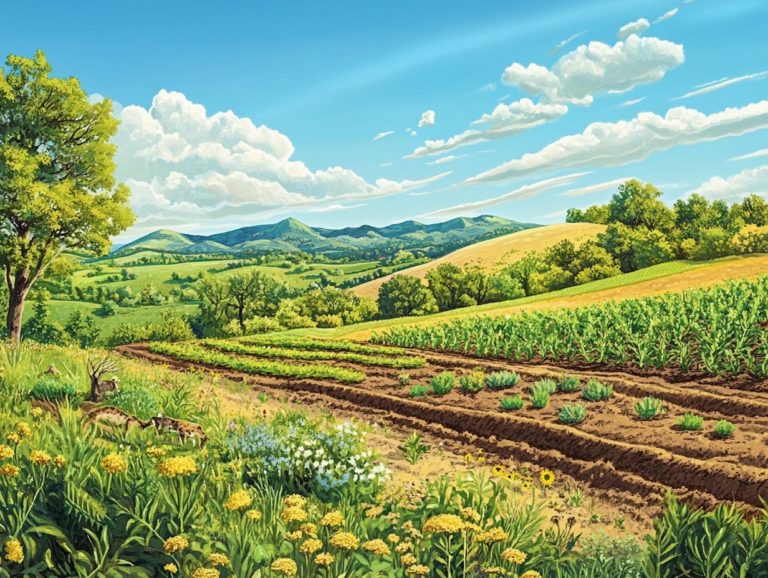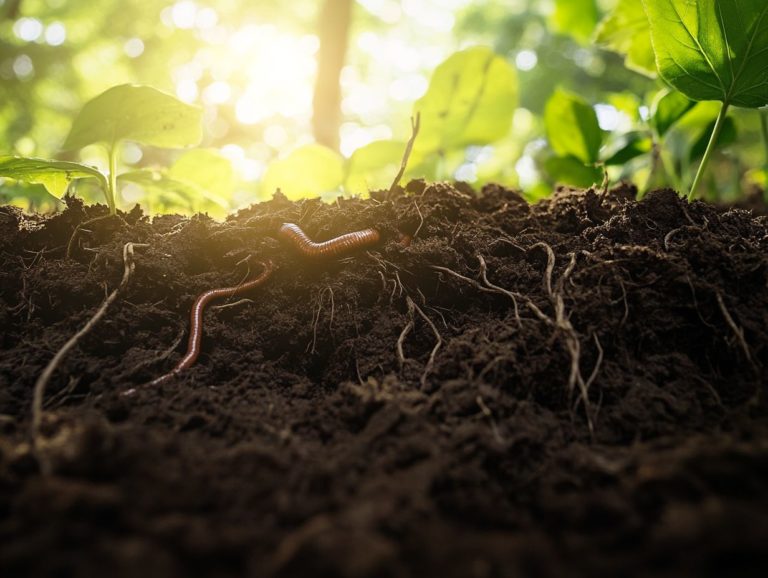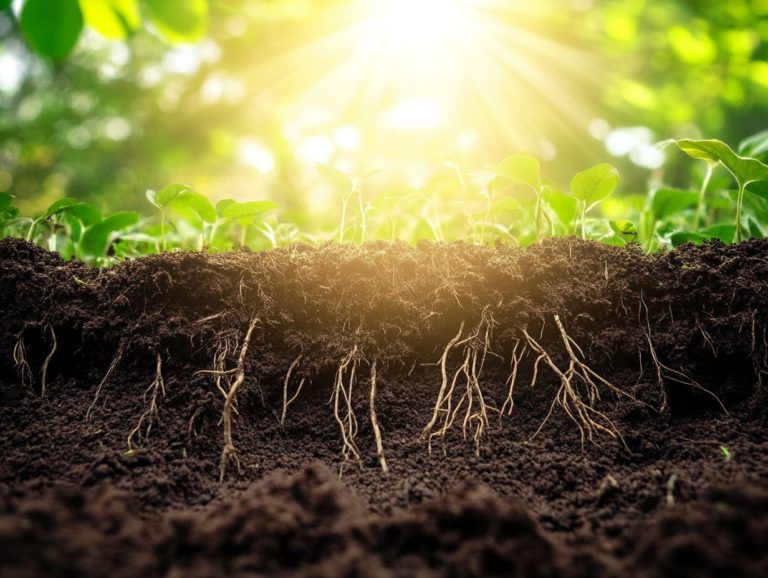The Connection Between Soil and Climate Change
Soil frequently remains in the shadows during conversations about climate change. However, it holds a vital position in the well-being of our planet.
This exploration delves into the intricate relationship between soil and climate change, shedding light on how climate influences soil quality and health. It reveals the powerful ways soil can contribute to mitigating climate change, especially through the process where soil stores carbon.
Sustainable practices and key policies that advocate for soil health are discussed. Join us as we uncover these vital connections and solutions.
Contents
Key Takeaways:
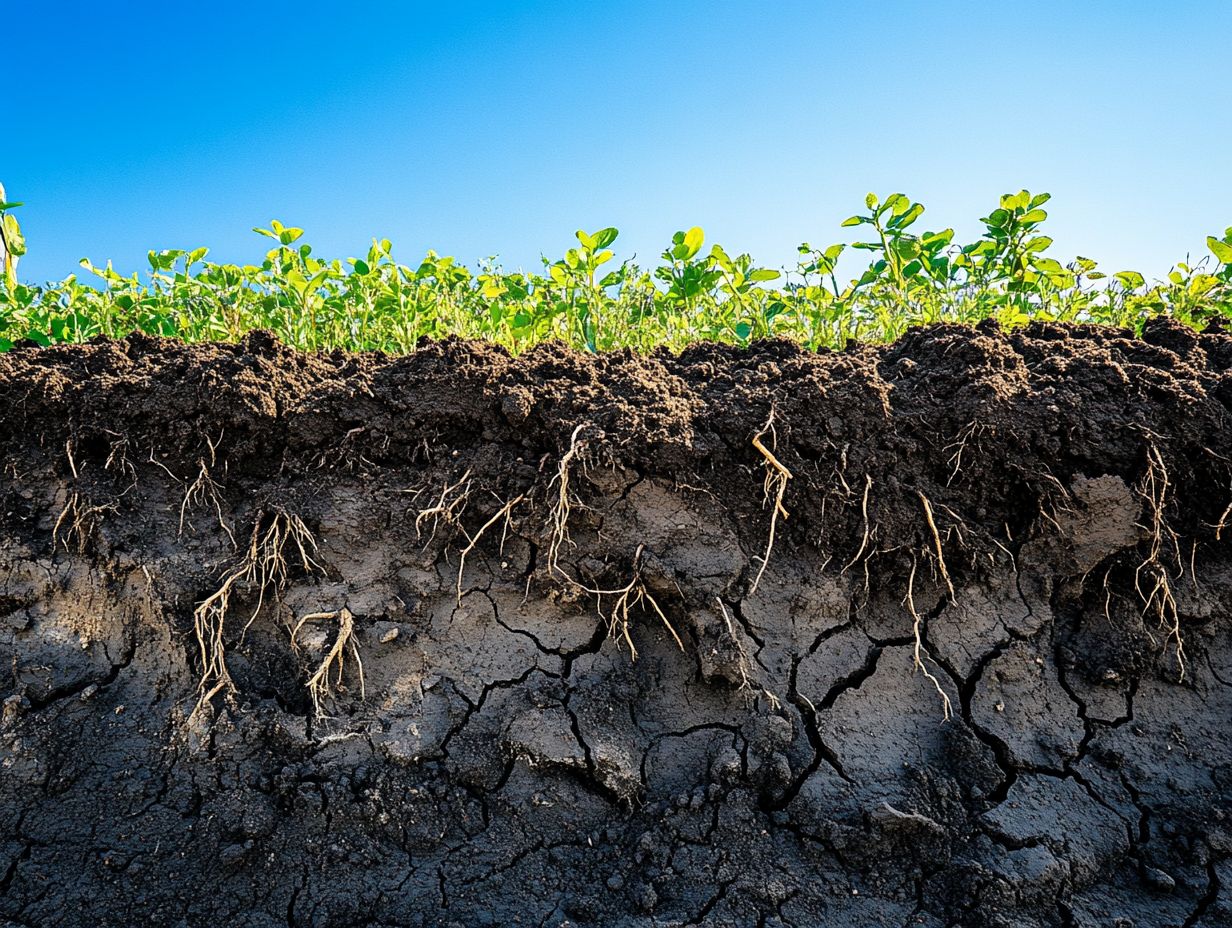
- Soil plays a crucial role in climate change by storing and releasing carbon, influencing weather patterns, and affecting the overall health of our planet.
- As climate change worsens, it can have damaging effects on soil quality and health, leading to decreased crop productivity and increased erosion.
- Implementing sustainable agriculture and land management practices, such as no-till farming and cover cropping, can help improve soil health and mitigate the impacts of climate change.
The Role of Soil in Climate Change
Soil is pivotal in the realm of climate change, serving as a carbon sink that facilitates carbon storage and nurtures biodiversity, which in turn strengthens ecosystem health.
The intricate relationship between soil health and climate cannot be understated. Soils are essential not only for agriculture but also in shaping greenhouse gas emissions, water infiltration, and nutrient cycling.
By grasping the nuances of soil function, you can uncover the pathway to sustainable agricultural practices that enhance food security while simultaneously mitigating the effects of global warming.
Understanding the Relationship
The connection between soil health and climate change fundamentally hinges on how soil interacts with carbon dioxide and other greenhouse gases through microbial decomposition and agricultural practices.
Healthy soils act as essential carbon sinks, effectively storing significant amounts of carbon while also releasing some back into the atmosphere through microbial processes. These microbial communities play a pivotal role in breaking down organic matter, directly affecting the levels of carbon dioxide released.
Engaging in agricultural practices like tillage (the turning of soil), monocropping (growing the same crop repeatedly), or excessive fertilizer use risks disrupting these vital ecosystems, leading to increased emissions and reduced soil fertility.
On the flip side, adopting sustainable practices such as cover cropping and agroforestry can enhance microbial diversity and improve the soil’s ability to sequester carbon. This not only bolsters soil health but also plays a crucial role in mitigating the effects of climate change.
How Climate Change Affects Soil
Climate change has a profound impact on soil, contributing to degradation and transforming environmental conditions that jeopardize soil quality and health.
Variations in rainfall patterns and temperature can alter soil structure and its moisture retention capabilities. This directly affects agricultural productivity and the responsiveness of ecosystems.
These changes can disrupt nutrient cycling and compromise the overall ecological health of soil ecosystems. This highlights the urgent need for attention and adaptive management strategies.
In conclusion, understanding soil’s role in our climate is essential. We encourage you to adopt sustainable practices that promote soil health and contribute to combating climate change.
Impact on Soil Quality and Health
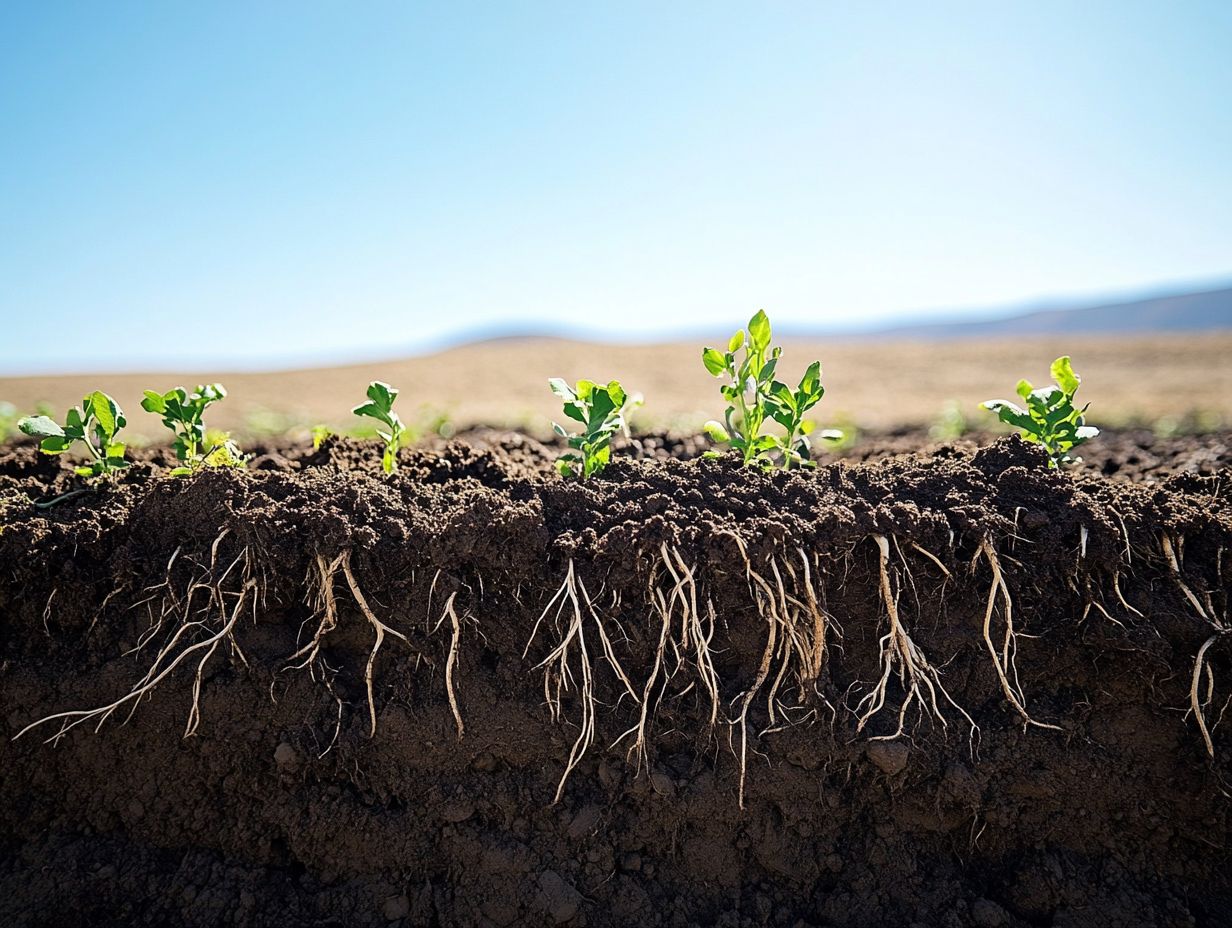
The impact of climate change on soil quality and health is evident in several ways. These include increased soil erosion, reduced water retention, and shifts in soil types that directly influence agricultural outputs.
As temperatures rise and weather patterns become more unpredictable, soil erosion intensifies. This washes away the precious topsoil that nourishes your crops and leads to nutrient depletion.
The decline in water retention is particularly concerning for sandy soils, which struggle to retain moisture during droughts. Meanwhile, clay-rich soils can become compacted, making them less responsive to irrigation efforts.
These changes jeopardize the vitality of your crops and compel you to adapt your farming practices. You may find yourself exploring new methods of soil conservation and water management to maintain agricultural productivity and ensure food security in an increasingly challenging environment.
Ways Soil Can Help Mitigate Climate Change
Soil has incredible power to fight climate change. It does this through storing carbon, sustainable farming practices, and supporting a variety of life. These elements work together to enhance ecosystem services and resilience.
By prioritizing soil health, you can significantly boost its ability to store carbon, improve water infiltration, and enhance nutrient cycling directly tackling the challenges that climate change presents.
Carbon Sequestration and Other Benefits
Capturing carbon is a major benefit of healthy soil. It stores large amounts of carbon dioxide, helping to reduce emissions while enriching soil fertility.
This process mitigates climate change and fosters a vibrant ecosystem that supports diverse plant and animal life. Organic matter is crucial in this equation, serving as a carbon reservoir while improving soil structure.
Healthy soil enhances water retention and nutrient availability. By adopting conservation practices like reduced tillage, cover cropping, and crop rotation, you can further bolster soil health, creating a synergistic effect that amplifies food production.
Ultimately, robust soil does more than capture carbon; it cultivates sustainable agricultural systems, securing food for future generations.
Practices to Improve Soil Health
Improving soil health is key for sustainable agriculture. You can achieve this with effective soil management, crop rotation, and building soil aggregates.
These strategies not only enhance ecological health but also promote efficient nutrient cycling, ensuring the long-term vitality of your agricultural endeavors.
Sustainable Agriculture and Land Management
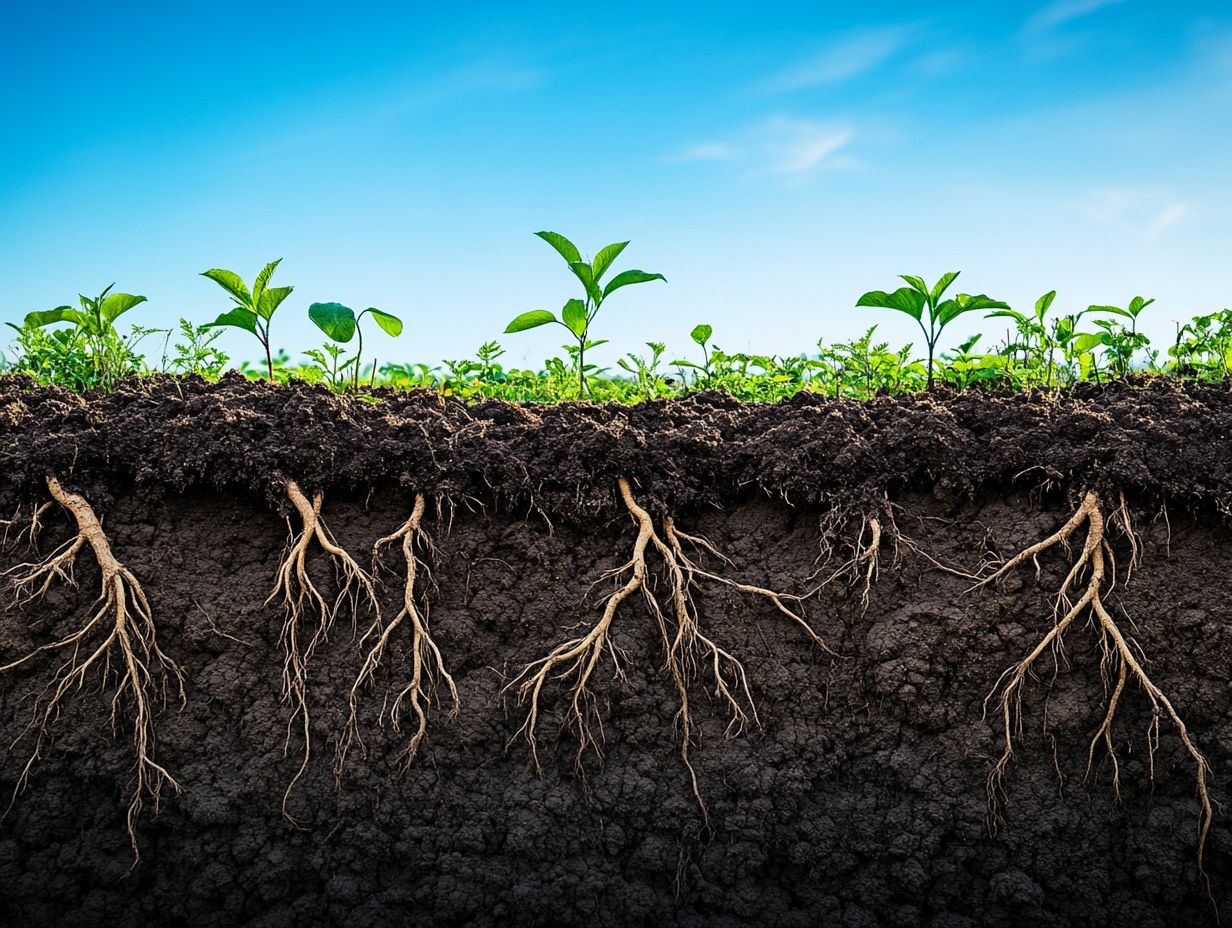
Sustainable agriculture and effective land management are crucial for healthy soil. These practices keep your land productive while preserving biodiversity!
They encompass a variety of techniques, such as crop rotation, organic farming, and agroforestry, all working in harmony to improve soil structure and fertility.
By promoting a diverse array of plant and animal species within your farming systems, sustainable agriculture nurtures a resilient ecosystem capable of withstanding pests, diseases, and climate fluctuations.
This holistic approach supports the regeneration of vital resources like water and nutrient cycles while minimizing reliance on chemical inputs. Ultimately, both you and consumers stand to gain from healthier food systems and a more sustainable future for our planet.
Policies and Initiatives for Soil and Climate Change
Numerous policies and initiatives have been crafted to tackle the intricate relationship between soil and climate change. Government efforts and international frameworks, such as the Paris Accord and the Intergovernmental Panel on Climate Change, are all designed to enhance soil management practices and promote sustainability.
By understanding and engaging with these initiatives, you can contribute to a more sustainable future.
Government and International Efforts
Government and international efforts are essential in advancing environmental policies that prioritize soil health and climate adaptation. Prominent organizations like the United Nations and the European Commission are spearheading these initiatives.
These entities are rolling out initiatives like the Soil Health Initiative and the European Green Deal. Both aim to enhance sustainable land use practices and bolster soil resilience against the impacts of climate change.
Key policies focus on reducing soil degradation, promoting organic farming, and enhancing biodiversity. Join forces with top research organizations and local communities to develop comprehensive action plans.
International agreements, such as the Paris Accord, emphasize effective soil management as a vital component in meeting global climate targets. This highlights how unified efforts can significantly alleviate environmental challenges.
Frequently Asked Questions
Here are some common questions about the vital link between soil and climate change.
What is the connection between soil and climate change?
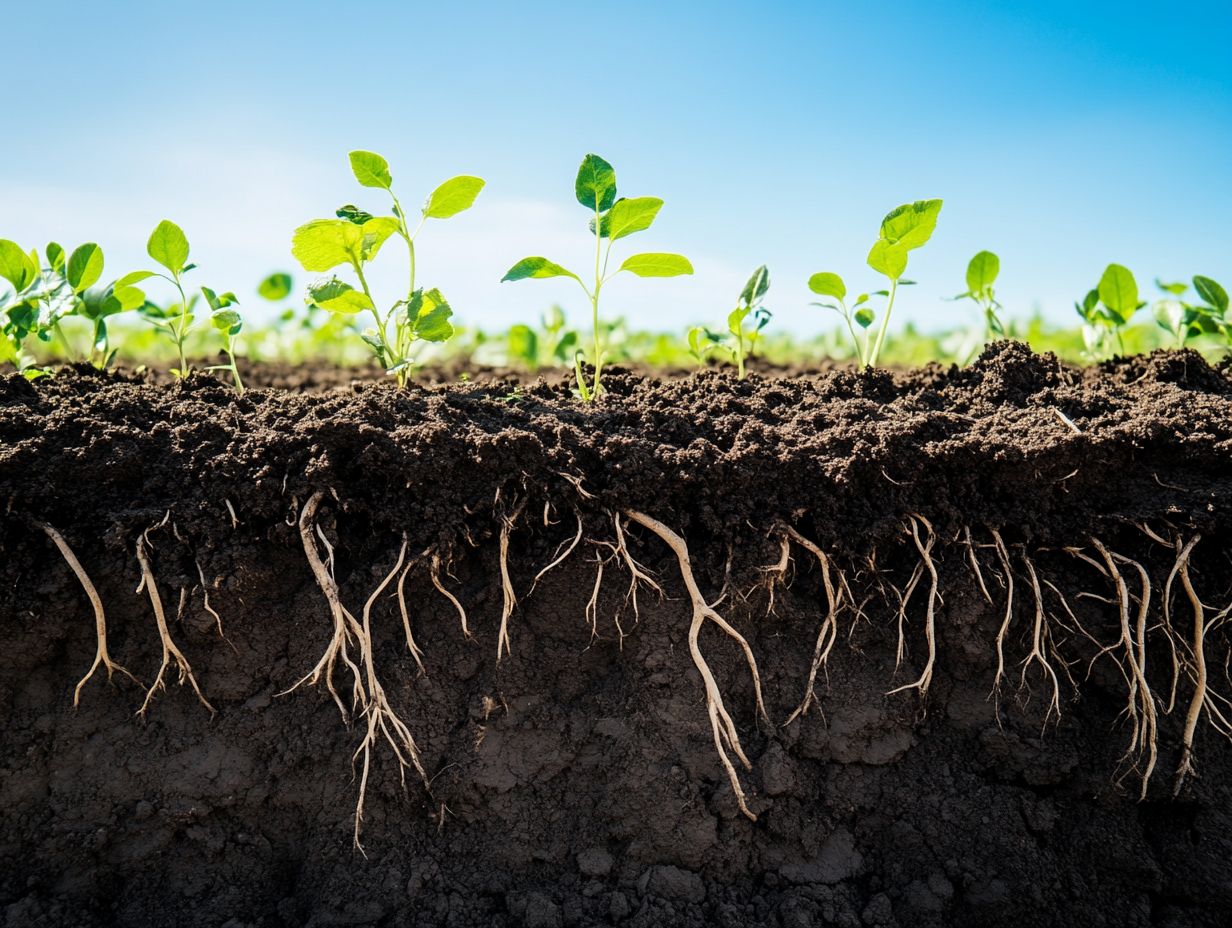
The connection between soil and climate change is significant. Healthy soil plays a crucial role in regulating the Earth’s climate. It acts as a carbon sink, storing large amounts of carbon that would otherwise be released into the atmosphere and contribute to global warming.
How does soil contribute to climate change?
Poor soil management practices, such as deforestation, overgrazing, and intensive farming, can lead to soil degradation. This results in the release of large amounts of carbon into the atmosphere, increasing the concentration of greenhouse gases and contributing to climate change.
Can soil help mitigate climate change?
Yes, healthy soil can help mitigate climate change by storing carbon from the atmosphere. This process, known as carbon storage, can help offset the effects of greenhouse gas emissions and slow down the rate of climate change.
How does climate change affect soil?
Climate change can have detrimental effects on soil. It alters soil temperature, moisture, and nutrient availability. Extreme weather events, such as floods and droughts, can damage soil and reduce its ability to support plant growth and sequester carbon.
What role do microorganisms in soil play in climate change?
Microorganisms in soil, such as bacteria and fungi, regulate the carbon cycle by breaking down organic matter and releasing carbon into the atmosphere. Changes in soil microbial communities due to climate change can affect the amount of carbon stored in the soil and contribute to further climate change.
How can we improve the connection between soil and climate change?
We can improve this connection by implementing sustainable soil management practices. Techniques such as conservation agriculture, agroforestry, and composting can enhance soil health, increase carbon storage, and reduce greenhouse gas emissions from agriculture.
Discover how you can contribute to healthier soils and a better climate today!

